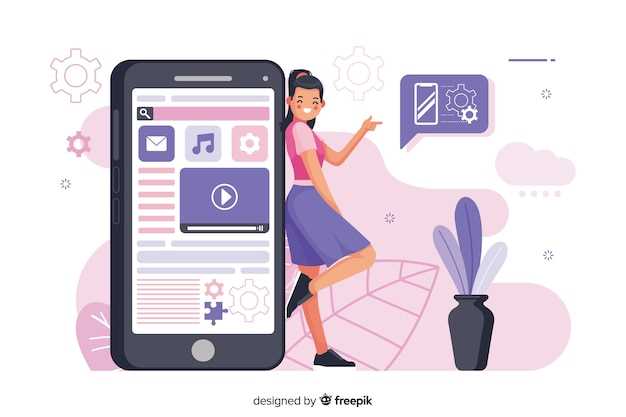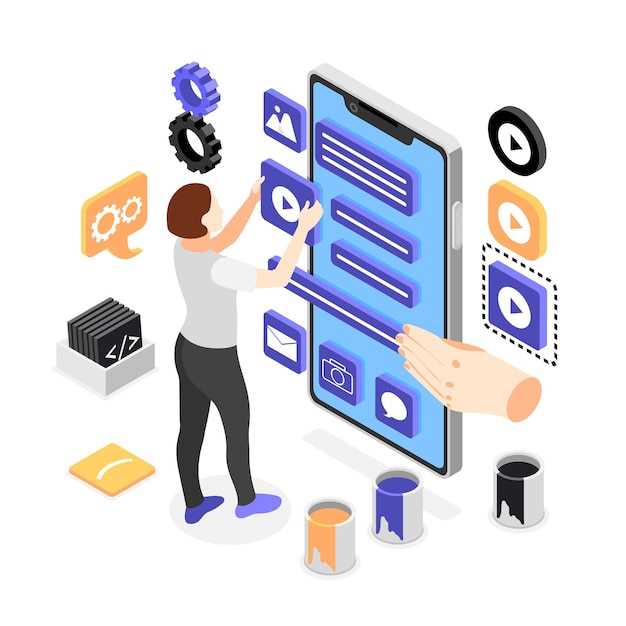In today’s rapidly developing digital world, it is essential for businesses to have a presence on various mobile platforms to reach a wider audience. One of the most effective ways to achieve this is by creating applications that are compatible with both iOS and Android devices.
Building applications for multiple operating systems can be a challenging task, but with the right approach and tools, it can be a rewarding experience. By having a thorough understanding of the differences between iOS and Android platforms, developers can create versatile and user-friendly applications that cater to the needs of a diverse user base.
In this article, we will explore a step-by-step process for creating applications that are compatible with both iOS and Android platforms. From planning and design to development and testing, we will cover all aspects of the app development process to help you create successful and engaging apps for a wider audience.
Cross-Platform Development Strategies
In the realm of creating applications that can be utilized across multiple operating systems and devices, there are various strategies that developers can employ to streamline the development process and ensure optimal performance. By utilizing cross-platform development strategies, developers can minimize the time and effort required to create separate applications for different platforms, ultimately leading to a more efficient and cost-effective development process.
Understanding Cross-Platform Frameworks
When creating applications for multiple mobile platforms, it is essential to utilize cross-platform frameworks. These frameworks allow developers to write code once and deploy it across various operating systems, streamlining the development process and increasing efficiency.
- Cross-platform frameworks enable developers to save time and resources by avoiding the need to write separate codebases for each platform.
- These frameworks use a unified codebase, which can be easily adapted and updated to support different operating systems.
- By leveraging cross-platform frameworks, developers can reach a broader audience, as their applications can be deployed on both iOS and Android devices without additional development efforts.
React Native

React Native offers a unique approach to developing applications for multiple platforms without the need to rewrite code for each platform individually. This framework allows developers to create cross-platform mobile applications using a single codebase, providing a more efficient and cost-effective solution for businesses looking to reach a wider audience.
React Native utilizes JavaScript and React to build native mobile applications, providing a seamless user experience across different devices and operating systems. By leveraging native components, developers can create high-performance applications that look and feel like native apps on both iOS and Android devices.
With React Native, developers can take advantage of hot reloading, which allows them to see changes in real-time without rebuilding the entire application. This feature speeds up the development process and makes it easier to experiment with different features and designs.
Flutter

Flutter is a versatile framework that allows developers to create high-quality cross-platform applications. It provides a seamless development experience for building user-friendly interfaces and smooth animations. With Flutter, you can efficiently write code once and deploy it on multiple platforms, increasing productivity and reducing time to market.
Xamarin

In this section, we will explore Xamarin, a powerful tool that allows developers to create cross-platform applications for mobile devices. Xamarin enables developers to write code in a single language and deploy it on multiple platforms, saving time and resources.
- Xamarin provides a seamless development environment for creating native applications on iOS and Android.
- Developers can use C# and .NET to write code that can be shared across different platforms, increasing efficiency.
- Xamarin offers a wide range of libraries and APIs that make it easy to access native features on both iOS and Android devices.
Benefits of Cross-Platform Development
Cross-platform development offers numerous advantages for creating applications that can be deployed on multiple operating systems and devices. By utilizing a single codebase, developers can streamline the development process, reduce time-to-market, and lower overall costs. Additionally, cross-platform development allows for easier maintenance and updates, as changes can be implemented across all platforms simultaneously.
With cross-platform development, developers can reach a wider audience by targeting multiple platforms with one development effort. This approach also enables consistent user experience across different devices, ensuring a seamless interaction for users regardless of the device they are using. Furthermore, cross-platform development allows for quicker iterations and faster implementation of new features, ultimately improving the overall efficiency of the development process.
Cost Efficiency

When it comes to creating an application for both major mobile platforms, it is essential to consider the financial aspects of this process. Achieving cost efficiency in app development is crucial in order to maximize the return on investment and ensure that the project stays within budget.
Optimizing expenses without compromising the quality of the final product requires a strategic approach. This involves careful planning, prioritizing features, utilizing cost-effective development tools, and efficient resource management. By minimizing unnecessary costs and focusing on delivering value to users, developers can successfully create a high-quality app that meets the needs of both iOS and Android users.
Faster Time to Market
Accelerating the speed at which your product hits the market is crucial for staying ahead of the competition and meeting customer demands. In this section, we will explore strategies and best practices to streamline the development process and minimize time-to-market for your app on both iOS and Android platforms.
- 1. Utilize Cross-Platform Development Tools: Take advantage of cross-platform development tools such as React Native or Flutter to build your app for both iOS and Android simultaneously.
- 2. Agile Development Methodology: Implement Agile practices to promote collaboration, flexibility, and constant feedback throughout the development cycle, ensuring faster iterations and quicker releases.
- 3. Prioritize Features: Focus on essential features and functionalities that deliver the most value to users, allowing you to launch a minimum viable product (MVP) faster and gather user feedback early on.
- 4. Automated Testing: Invest in automated testing tools and processes to identify bugs and issues early, streamline testing workflows, and ensure a faster and more reliable release cycle.
- 5. Continuous Integration and Deployment (CI/CD): Implement CI/CD pipelines to automate the build, testing, and deployment processes, enabling frequent updates and faster delivery of new features to users.
Unified User Experience
Creating a cohesive and consistent user experience across multiple platforms is essential for the success of your mobile application. When users interact with your app on different devices, they should feel like they are using the same product, regardless of whether they are on an iPhone or an Android device.
By focusing on a unified user experience, you can ensure that your app design, functionality, and features are seamlessly integrated across all platforms. This not only enhances user satisfaction but also builds brand loyalty and credibility.
Video:
App Development: Process Overview, From Start to Finish | Udemy instructor, Angela Yu
App Development: Process Overview, From Start to Finish | Udemy instructor, Angela Yu by Udemy 740,533 views 5 years ago 51 minutes
FAQ:
What are the advantages of developing an app for both iOS and Android platforms?
Developing an app for both iOS and Android platforms allows you to reach a wider audience as both iOS and Android have a large user base. It also helps in increasing the visibility and success of your app as it can cater to users of both platforms, leading to potential revenue growth.
What are the key steps involved in developing an app for both iOS and Android?
The key steps involved in developing an app for both iOS and Android include conceptualizing the app idea, designing the user interface, developing the app using cross-platform frameworks like React Native or Flutter, testing the app thoroughly on both platforms, and finally launching it on the Apple App Store and Google Play Store.
Is it necessary to hire separate developers for iOS and Android app development?
No, it is not necessary to hire separate developers for iOS and Android app development. You can opt for cross-platform development frameworks like React Native or Flutter that allow you to write code once and deploy it on both platforms. This can help save time and resources as you don’t need to maintain separate codebases for iOS and Android.
What are the common challenges faced when developing an app for both iOS and Android?
Some common challenges faced when developing an app for both iOS and Android include ensuring consistent user experience across both platforms, handling platform-specific design guidelines, and resolving compatibility issues between different devices and operating system versions. It is important to thoroughly test the app on both platforms to address these challenges.
What are some tips for successfully launching an app for both iOS and Android?
Some tips for successfully launching an app for both iOS and Android include conducting market research to understand the target audience, optimizing the app store listings with relevant keywords and attractive visuals, promoting the app through various channels, and collecting user feedback to continuously improve the app. It is also important to stay updated with the latest trends and technologies in app development to stay competitive in the market.